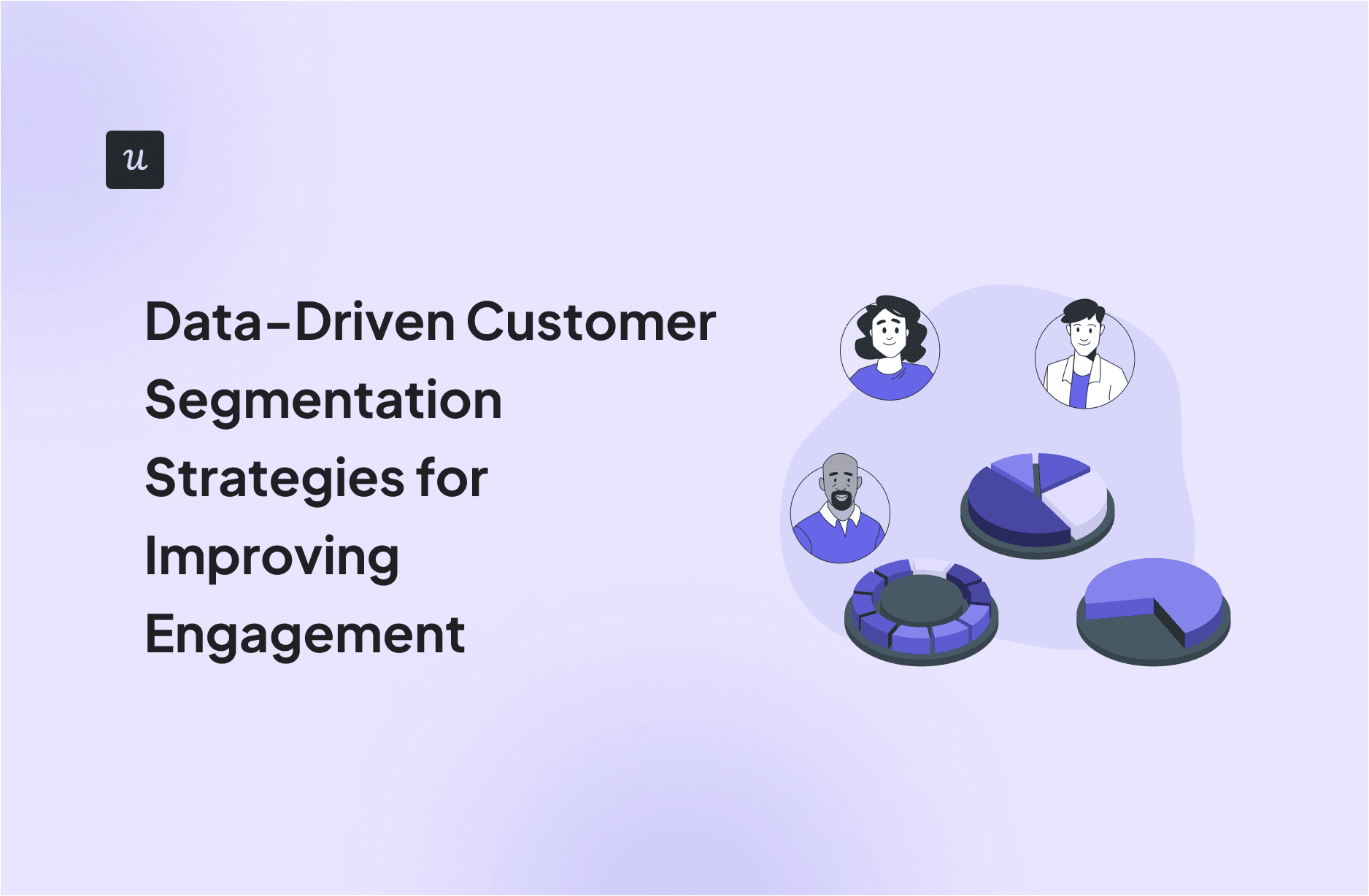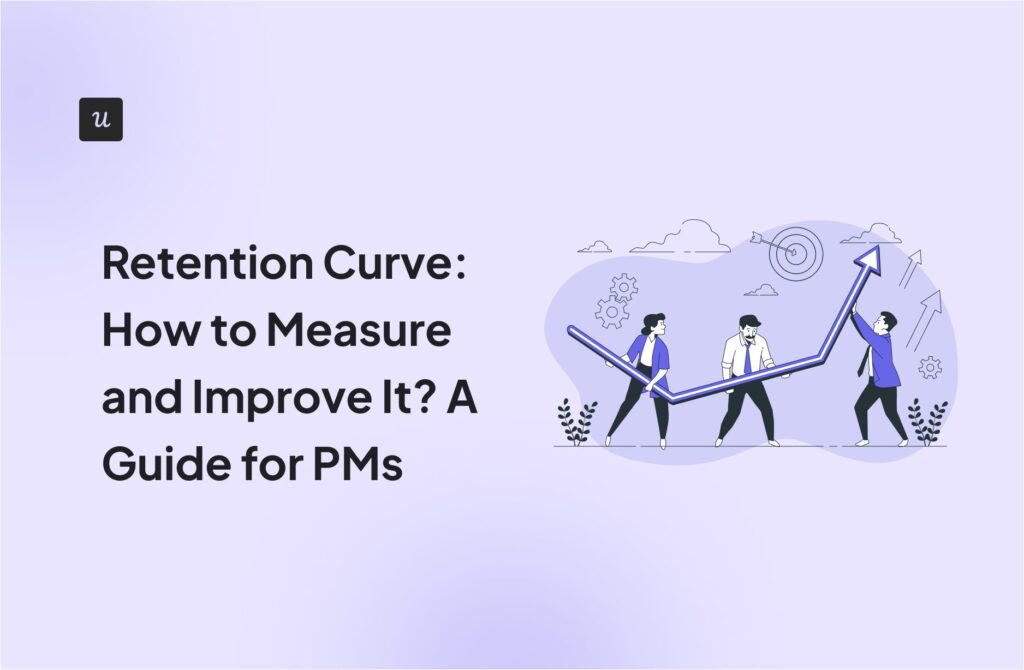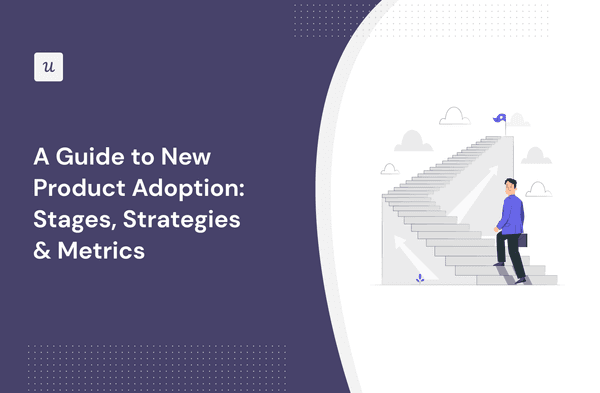
Try Userpilot Now
See Why 1,000+ Teams Choose Userpilot

What is data-driven customer segmentation?
Data-driven customer segmentation is the process of dividing your customer into distinct groups based on shared characteristics. Like in-app behavior or demographic data.
The purpose?
To tailor marketing efforts, better understand customer needs and preferences, and personalize in-app experiences. To name just a few.
Why is customer segmentation important?
There are two main reasons why implementing customer segmentation is essential for your product success.
First, it enables you to better understand your customers.
Unless you have a very specialist product, your customer base isn’t likely to be homogeneous.
Instead, it consists of multiple groups with their unique pain points, needs, and desires. To gain meaningful insights, you can simply throw them into one bag but analyze them independently.
Why do you need such nuanced insights?
They allow you to:
- Build valuable products that solve genuine customer problems.
- Allocate resources to maximize ROI. For example, it helps you prioritize features that are important for users that bring the most revenue.
- Implement targeted marketing strategies that better resonate with the target audience. For example, by using their preferred channel or highlighting features relevant to their use cases.
- Personalize user experiences to their use cases. For instance, by tailoring the onboarding experiences, customizing their dashboards, or optimizing the product for different devices.
Ultimately, segmentation enables you to attract the right customers and better satisfy their needs. This translates into improved long-term retention and high customer lifetime value.
Examples of customer segments
You can segment your customers based on different data types. Popular segmentation types include:
- Demographic (e.g., age, gender).
- Geographic (e.g., location, language).
- Behavioral (e.g., whether they’ve adopted a feature).
- Technographic (e.g., device type, operating system, browser).
- Psychographic (e.g., lifestyle choices, values).
- Firmographic (e.g., company size, sector).
- Needs-based (e.g., jobs to be done).
SaaS teams are likely to segment their customers based on multiple criteria at once. For example, you may target various professional groups with localized email campaigns based on their location.
Successful customer segmentation strategies to implement with Userpilot
Userpilot is a product growth platform. It allows you to create personalized customer engagement strategies based on quantitative and qualitative customer data.
Where does it come from?
Userpilot offers advanced analytics and feedback features so you can collect in-app behavior and user sentiment data.
And thanks to the integrations with analytics and customer relationship management tools like Google Analytics or Hubspot, you can import 3rd party data to segment customers based on their interactions at different stages of the customer journey.
Personalize customer onboarding with segmentation
The purpose of onboarding is to familiarize new customers with the features they need to achieve their objectives. Without distracting or overwhelming them with irrelevant information.
The catch is that your product has often multiple user personas, each with different goals. For example, bookkeeping software can be used by accountants, companies and freelancers. And they all need different features.
To accommodate their needs, you have to personalize the onboarding experience for different customer segments.
How does Userpilot help?
You can profile new users using a welcome survey and trigger relevant onboarding flows based on the information you receive.

Duplicate the success path for new users
When onboarding customers, you want them to experience the product value as soon as possible. This means taking them to the activation point along the most direct route.
But how do you know the most optimal path to activation?
By analyzing the in-app behavior of the most successful users.
To do so, first segment customers based on their use case. Next, look for power users within each segment. For example, those who have used the product for a specific time and adopted certain features.
Next, conduct path analysis to map out their actions leading to activation. Userpilot allows you to visualize the Top Path to quickly identify the most popular sequence of steps.
Based on that, create an onboarding flow that pushes new users onto the happy path and helps them replicate it.

Enhance customer satisfaction for dissatisfied users
What do you do when you receive negative customer feedback?
With Userpilot, you can identify the cause of customer dissatisfaction and implement targeted strategies to alleviate the issues.
Imagine that your NPS respondents complain about a missing feature. The problem is that the feature exists. So why the negative comments?
To find out the cause, tag responses mentioning the feature and segment the users. Next, analyze their in-app behavior with path analysis and send targeted messages inviting the users to an interview.
Once you figure out the cause of the ‘misunderstanding,’ tackle it accordingly. For example, redesign the onboarding process to better cover the feature.

Improve feature adoption for relevant users
Sometimes your users don’t know they’re missing a feature. They may not be aware of your product capabilities. And as a result, not be able to analyze the product’s full potential.
How do you help them adopt the feature?
By targeting them with in-app messages that help them discover the feature. And prompt them to engage with it again and again until it becomes a habit.
Userpilot analytics help you identify users who have adopted a feature yet and trigger relevant in-app experiences that drive their engagement.

Drive WoM among promoters
Word of mouth is believed to be the most effective customer acquisition channel. Prospective customers are more likely to believe testimonials from people they know personally than your marketing campaigns.
And satisfied customers naturally turn into product advocates but it takes time and is out of your control.
With Userpilot, you can accelerate the process.
It allows you to segment your customers based on their survey results. So you can segment all your NPS promoters together and target them with in-app prompts to drive the desired behavior. Like taking part in a referral program or leaving a G2 review.

Create targeted marketing campaigns
To achieve financial success, you need to convert your free trial or freemium users into paying customers. And to increase their lifetime value through upsells or cross-sells.
The problem is that users need time to reach the stage when they’re ready to upgrade to a higher plan or buy an additional product.
With Userpilot, you can track the in-app behavior of users who have previously upgraded to identify the moment they’re ready.
Next, you can segment the customers who meet the criteria and target them with personalized marketing campaigns highlighting the benefits of upgrading relevant to their specific use cases or circumstances.

Announce new feature releases to the right audience
As mentioned, not all users need all the features. And you don’t want to overwhelm your customers with information about functionality they don’t need for 2 reasons: it causes fatigue and makes them wonder if you really understand their needs – or if they’ve chosen the right product.
Segmentation can help you avoid it.
You can use it to announce newly introduced features to users with relevant jobs to be done.
The best part?
If you’ve used welcome surveys to segment users at the beginning of the user journey, you’re likely to be able to use the same segments here.

Identify negative behaviors and proactively fix them
With Userpilot analytics, you can find negative patterns in user behavior and use the insights to proactively fix issues for others.
Take churn, for example.
You can segment all users with particular use cases who have churned and conduct path analysis. To identify all their actions leading to churn. This can help you understand why your users disappear.
Better yet, you could bundle all the actions into custom events and use them to trigger in-app events with additional guidance that helps them overcome friction and prevents them from dropping off.

Conclusion
Customer segmentation is essential for effective customer engagement. You also need it to extract valid insights from customer behavior data and feedback.
Whether you’re using segmentation for creating targeted marketing campaigns, increasing product adoption, improving customer satisfaction, or want to learn what makes your customers tick, Userpilot has got the capabilities you need. Book the demo to find out more!








